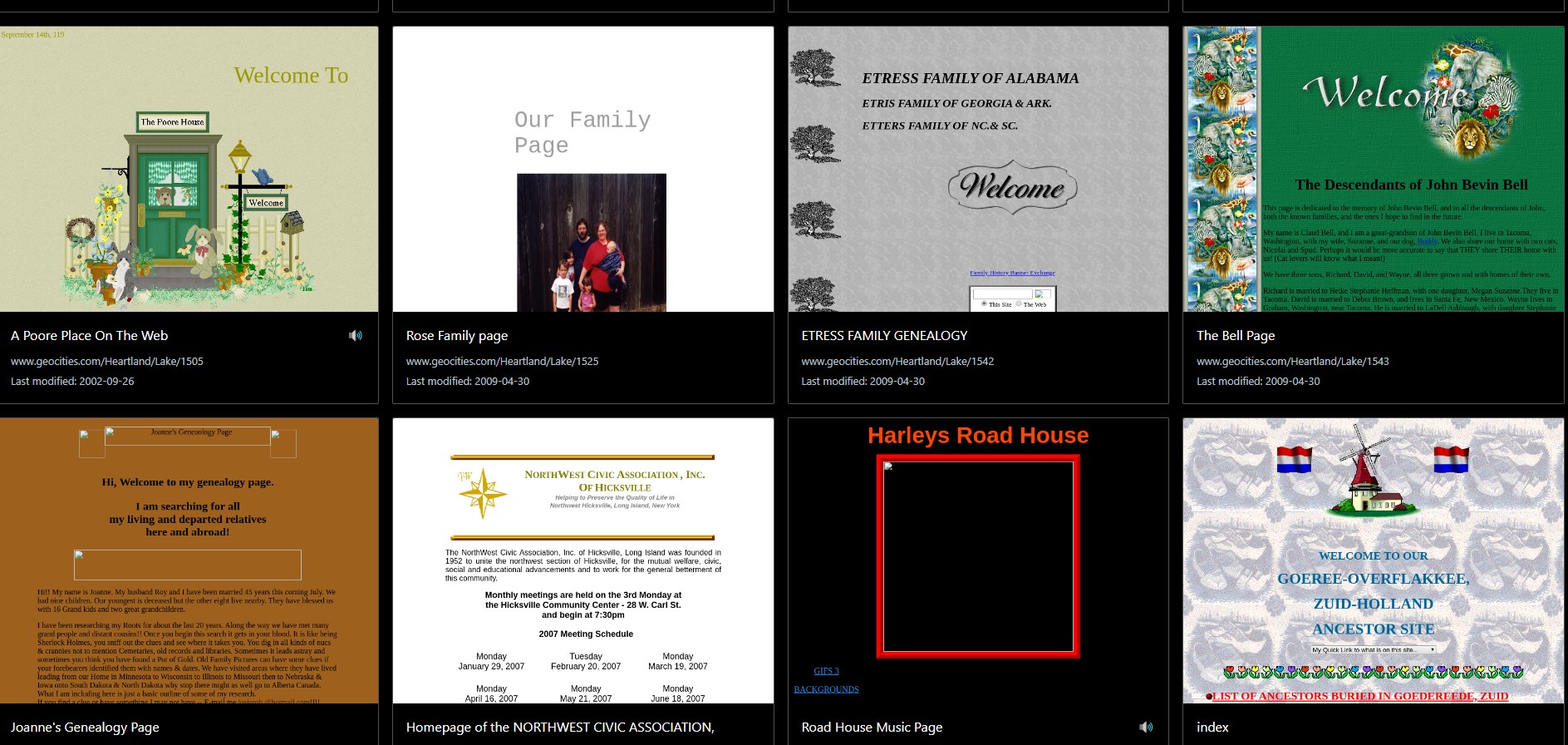Funday Friday digital archaeology

Join me for a jaunt down memory lane back to the days when you were taking your first steps and I was already feeling old… I watched the web being born, taking tangled shape, and finding its current form was a fascinating experience. The early days of the Web were not like today. I watched people created cringe-worthy (even at the time) pages by hard coding html and javascript (we were using html 5 for everything the last time I checked, and that standard is probably being superseded as I type) everything in a text editor to create static webpages with little animations and variously bland or garish colour palettes. Now the past lives again after a fashion, thanks to Restorivland – a crowdfunded, one-man entrepreneurial project “to excavate shut down, abandoned web ruins and restore them to surfable, visually accessible, searchable, remixable condition”. It’s clearly a labour of love and well worth a look. I promise you one thing: you will never feel badly again about the design of any website you create after seeing what people were putting together 20 years ago!
Geocities: the Atlantis of the early web
Lacking connectivity the web of the early 2000s lacked connectivity, and search engines were still in their infancy, with the now ubiquitous Google having just appeared in 1997, and the first iteration of the popular web comprised various homepages that showcased people and personalities from students to housewives and corporate giants, such as Nescafé moving into digital quasi-neighbourhoods, with pages literally sitting beside one another in Geocities – a directory that functioned like an atlas of where people’s static homepages. People founded communities of common interests, and others gravitated to them, like today on Pinterest or Discord, only updated once a day at peak times rather than every minute. They updated simple, static websites like shop windows or today’s Instagram accounts, showcasing their lifestyles and values for the world to see. By the turn of the millennium, Geocities had already gone into a terminal decline, to the dismay of those who had made it their home and found friends in their chosen digital locale. But the site had been too comprehensively abandoned in favour of more ephemeral platform-based interactions such as internet relay chatrooms that foreshadowed modern social media and websites without signposted virtual locations that would become the interconnected, search-based web we know today
Wild and lawless digital frontiers and the rise of the far right
Elsewhere, the ancient technology of bulletin boards was being overhauled in line with increasing bandwidth and approached a critical mass where the disaffected and disenfranchised could foment dissent. This was the Wild West of the digital revolution, more dangerous than you can possibly imagine for young people venturing out from their sheltered suburban lives into predatory online spaces lacking well-established social norms and experiencing the full force of the disinhibited and maladjusted. Some spaces were more dangerous than others.
The infamous imageboard 4chan (take care how you go looking for this platform – 4chan still exists but only its somewhat filtered ‘4channel’ variant is even claimed to be “safe for work”) undertook a dangerous social experiment by creating a space online with (almost) no rules – an imageboard called simply /b/. This was the epicentre for danger on the early internet, lawless by design, where even moderators were reportedly not allowed to act. It was here that the nascent far-right launched Gamergate: the first testing ground for mobilising geographically isolated disaffected individuals that morphed into the recent rise in far-right political activism. Society should have paid more attention to the deep unhappiness and social sickness that Gamergate helped surface but apathy and short-term politics allowed this to sink once again out of sight in society much of the social malaise in society to the fore and demonstrated how easily bad ideas and misinformation could spread and make new friends and find a soapbox in this freshly interconnected world.
Well, that took a dark turn!
This started as a short post about a curio I stumbled across when signing up for BlueSky, but as is so typical with an interconnected web, all roads lead forward to the present. I learned quite a lot about how the modern world came to be that passed me by the first time while researching and writing this post; I hope you learned something, too.
Have you stumbled across or excavated any ancient curious on the internet? Let us know in the comments below.




Leave a Comment (note: all comments are moderated)